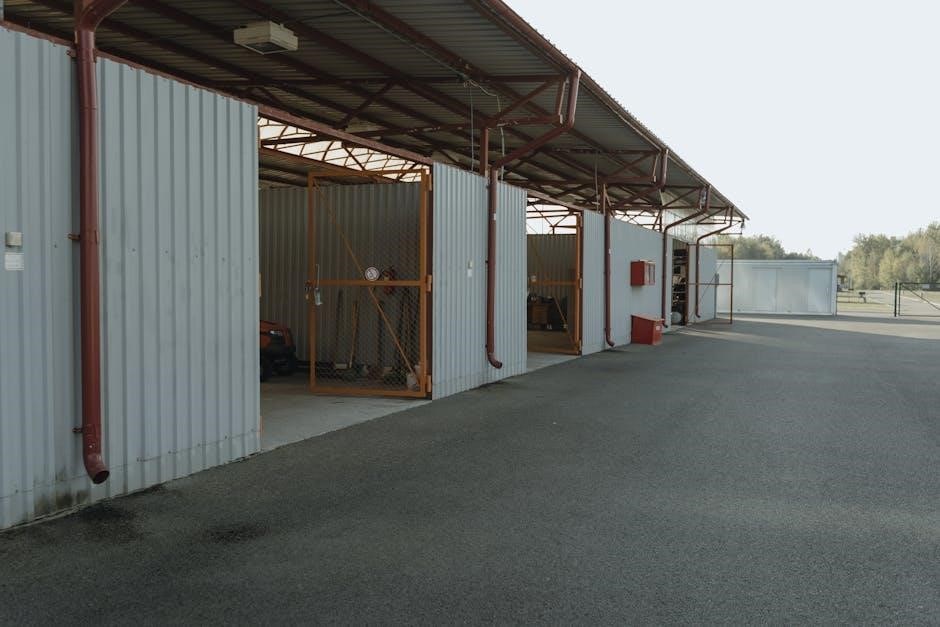Driving demands adherence to various instructions‚ ensuring road safety and order. Drivers are required to obey instructions from flaggers‚ security guards patrolling parking lots‚ and other drivers with broken-down vehicles.

Official Traffic Control Devices
Official traffic control devices‚ such as signs and signals‚ provide essential instructions for drivers. Drivers must obey the instructions of these devices. These devices help maintain order and safety on the roads.
Traffic Signals
Traffic signals are crucial components of traffic control‚ conveying instructions through colored lights. Drivers approaching intersections must obey the instructions communicated by these signals to maintain traffic flow and prevent collisions. A green light indicates permission to proceed‚ while a yellow light signals a need to prepare to stop. A red light mandates a complete stop before the intersection.
Ignoring traffic signals can lead to severe accidents and legal consequences. Drivers must exercise caution and be observant of signal changes. Additionally‚ drivers should be aware of pedestrian signals and yield to pedestrians crossing with the right-of-way. By adhering to traffic signal instructions‚ drivers contribute to a safer and more organized roadway environment for all users.
дорожные знаки
дорожные знаки‚ or road signs‚ communicate vital information to drivers through symbols and text. These signs provide instructions related to speed limits‚ lane usage‚ turning restrictions‚ and potential hazards. Drivers are legally obligated to obey the instructions conveyed by these signs‚ as they are designed to promote safety and regulate traffic flow effectively.
дорожные знаки come in various shapes and colors‚ each conveying a specific type of information. For example‚ red signs typically indicate prohibitions‚ while yellow signs warn of potential hazards. Ignoring дорожные знаки can lead to accidents‚ traffic violations‚ and increased risk for all road users. Drivers must be vigilant in observing and understanding дорожные знаки to navigate roadways safely and responsibly.

Law Enforcement Officers
Law enforcement officers have the authority to direct traffic and provide instructions. Drivers must obey police traffic instructions and directives to avoid obstructing traffic flow‚ ensure safety‚ and maintain order on roadways.
Police Traffic Instructions
Police officers play a vital role in maintaining order and safety on roads. Drivers must obey police traffic instructions and directives‚ as their commands supersede standard traffic signals or signs. This ensures smooth traffic flow‚ especially during emergencies or congested situations. Law enforcement officers may direct drivers to stop‚ proceed‚ change lanes‚ or take alternate routes‚ all in the interest of public safety.
Ignoring police traffic instructions can result in penalties and increased risk of accidents. Officers are trained to manage traffic efficiently‚ and their instructions should be followed promptly and accurately. This helps prevent congestion and ensures smooth movement of traffic during peak hours.
Drivers should also be aware that uniformed police officers have the authority to direct traffic during emergency situations. Their instructions are critical for managing traffic during accidents and other emergency situations.

Flaggers at Construction Sites
Drivers must obey instructions from flaggers at construction sites. These flaggers direct traffic and are in place to protect both drivers and construction workers. Obeying their signals is crucial for safety.
Ensuring Safety in Work Zones
Work zones present unique challenges for drivers‚ demanding heightened awareness and strict adherence to safety protocols. Drivers must obey special signs and instructions given by flaggers‚ who are essential for guiding traffic safely through these zones. These zones often utilize cones‚ drums‚ or other barriers to direct drivers‚ requiring them to merge cautiously and avoid crossing these markers.
It’s vital to reduce speed and prepare to stop for highway equipment. Watch out for bicycles if lanes are narrow or the shoulder is closed‚ and always avoid distractions. Flaggers are present to keep both drivers and workers safe by providing clear directions. Drivers must be alert and responsive to their signals‚ ensuring a smooth and safe passage through the construction area.

School Crossing Guards
Drivers must always obey instructions from school crossing guards‚ ensuring pedestrian safety‚ especially for children. These crossing guards play a critical role in managing traffic flow near schools.
Pedestrian Safety and Driver Responsibilities
Drivers have significant responsibilities concerning pedestrian safety‚ particularly near schools. Obeying instructions from school crossing guards is paramount. These guards are strategically positioned to ensure safe passage for pedestrians‚ especially children. Drivers must remain alert and attentive to their signals and directions. Ignoring these instructions can lead to dangerous situations and potential accidents.
Drivers must yield to pedestrians and allow crossing guards to safely reach the side of the road before proceeding. Their instructions must be obeyed at all times‚ not just during school hours or when children are visibly present. Prioritizing pedestrian safety ensures a safer environment for the community.
Drivers must exercise caution and patience‚ understanding that crossing guards are there to protect vulnerable pedestrians.
Security Guards
Drivers are required to obey instructions from security guards patrolling parking lots. These instructions ensure order‚ prevent accidents‚ and maintain security within parking facilities.
Parking Lot Instructions
Drivers must adhere to parking lot instructions given by security personnel. Obeying directions from security guards patrolling parking lots is crucial for maintaining order and safety. Security guards are authorized to provide parking lot instructions. Drivers are required to obey instructions from security guards patrolling parking lots. Security guards play a vital role in directing traffic‚ managing parking spaces‚ and preventing accidents.
Their instructions help to ensure a smooth flow of vehicles and the safety of pedestrians. Drivers who fail to comply with security guard instructions may face consequences‚ such as fines or towing. Security guards are trained to provide clear and concise directions. Drivers must pay attention to and follow their instructions promptly. By obeying parking lot instructions‚ drivers contribute to a safer and more organized environment for everyone.
Other Drivers in Emergency Situations
In emergencies‚ drivers must obey instructions from other drivers with broken-down vehicles. This cooperation ensures safety and facilitates efficient traffic flow during unexpected roadside incidents.
Broken-Down Vehicles
When encountering broken-down vehicles‚ drivers play a crucial role in ensuring safety and minimizing disruptions. Drivers are required to obey instructions from other drivers whose vehicles are broken down on the roadway‚ especially during emergency situations. This might involve carefully navigating around the vehicle‚ providing assistance if safe to do so‚ or following directions given by the vehicle’s operator to maintain a safe distance.
Effective communication and cooperation between drivers are paramount in such scenarios. Drivers should be prepared to adjust their speed‚ change lanes‚ or even temporarily stop to accommodate the situation. Remember to activate hazard lights to alert other drivers of the potential hazard. Maintaining awareness and showing consideration for those in distress contribute significantly to overall road safety. Prioritizing clear and calm communication fosters a safer environment for everyone involved.